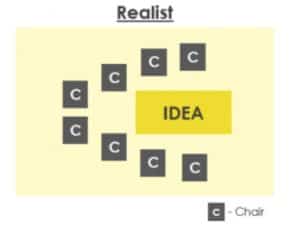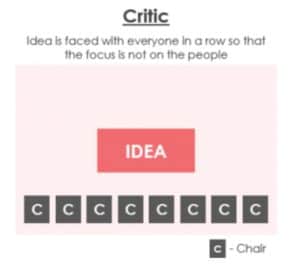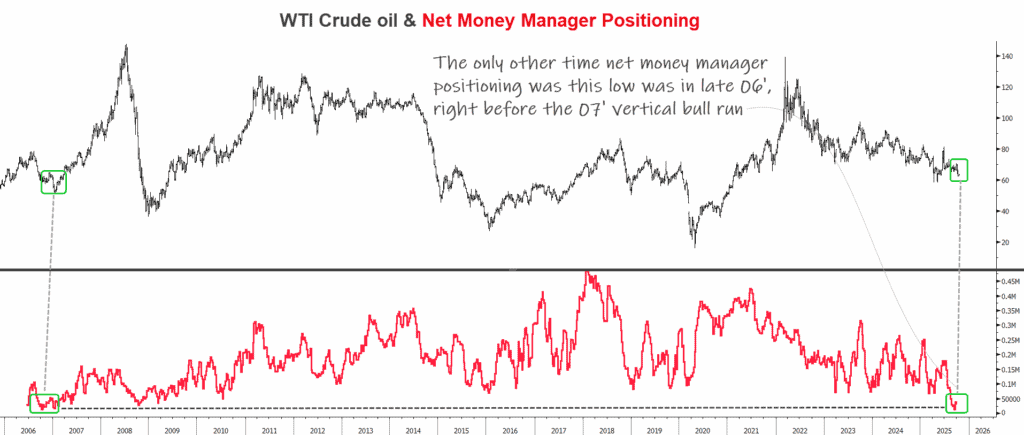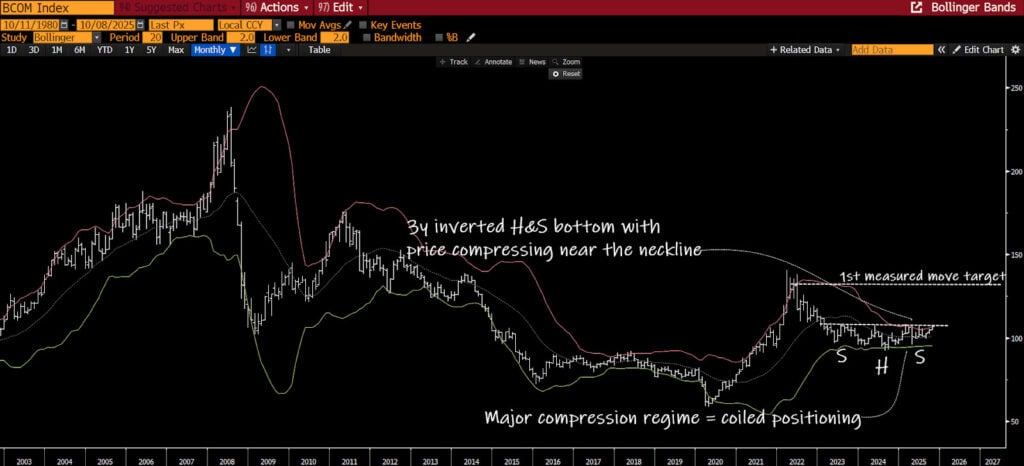Walt Disney epitomizes the ultimate Dreamer and Creator. From cartoons to movies to theme parks and more… His list of achievements is longer than Elon’s baby names.
How can one man develop the capacity to turn his dreams into the reality that billions enjoy today?
Superior models for operating mixed with a near-infinite supply of drive.
The creator of Mickey Mouse used a specific method of thinking to unleash his creative genius. Disney himself didn’t formally articulate this model of thinking. Robert Dilts, an NLP expert, put Disney’s ideas down on paper in 1994.
Here’s the best part. We can apply Disney’s strategy to our investment process.
Why Should Investors Think Creatively?
Before we dive into the method, we should ask ourselves, “why should we use creative thinking in our investment process?” After all, investing is pure math, right? Discount some cash flows, find an appropriate rate of return. Don’t pay too much for a good business … You get the point.
Did Ben Graham rely on creative thinking to profit from the markets? Nope. He used math. Did Walter Schloss dream about varying scenarios and future outcomes? Not quite. He bought a basket of undervalued stocks and held them for a year.
That was before computers commandeered the math.
Ben Graham and Walter Schloss lived in an age where information edges percolated every corner of the market. Find a 10-Q before someone else? You had an informational edge. Now, computers synthesize billions of data points in nanoseconds. Unless you invest in the darkest, most illiquid corners of the market, the days of informational edges are all but gone.
That’s why we need creative thinking.
As investors, our job isn’t to analyze the past. It’s to think about the future. To dream up scenarios nobody else is thinking about. To probabilistically weigh those potential outcomes to reality as we see it now.
That’s our job.
There’s no value in analyzing what’s in the past. All the value comes from what the future will look like in three, five, or ten years.
Take Chris Mayer’s 100 Baggers book as an example. You needed to have a dream of what the company would be in its early stages to hold on for dear life. An early investor in Monster ($MNST) wasn’t concerned with past operating losses. They were focused on the future of the market, the competitive advantages, and a world where Monster energy drinks sat in every grocery store.
But don’t just take my word for it. Take legendary trader Bruce Kovner’s words:
“First, I have the ability to imagine configurations of the world different from today and really believe it can happen. I can imagine that soybean prices can double or that the dollar can fall to 100 yen.”
We need to think creatively to generate outsized returns. Let’s learn how.
The Disney Method of Creative Thinking
The Disney Method of Creative Thinking is an active process. As investors (many of us one-man teams), we should use this method aloud. Actually speak your thoughts into existence.
The Disney Method has three “rooms” of thought:
-
- The Dreamer
- The Realist
- The Critic
Step one, separate each room in your home or office. If you don’t have the option to create three different rooms, use your mind. Sherlock Holmes’ mind palace is a good place to start.
Disney’s process relies on flow from one room to the next. The process always follows a set path: Dreamer –> Realist –> Critic.
Now that you’ve got your three rooms, it’s time to start thinking.
The Dreamer
The dreamer is responsible for thinking outside the box. Your wildest dreams not bound by reality, logic, or common sense. You have to use your imagination. I know, it doesn’t feel normal to use your imagination when investing. But try it.
Don’t be afraid to write/say extravagant ideas or future scenarios. That’s what you’re supposed to do in the dream room.
Remember, we’re framing this through the mind of an investor.
Here’s some questions to jog your dreamer process:
-
- If Company XYZ expands their product/grows margins/takes over an industry, what would that look like?
- What will be the main driver of this company’s growth ten years from now?
- What would sales and earnings look like if Company XYZ was able to achieve a dominant market share?
- If my dream about the company were to come true, how much of a discount is the current market price?
The important part is that none of the above questions/answers have to make sense. They don’t have to be logical or completely reasonable. You don’t know if it’s possible — and that’s the point.
 Check out the Dreamer visualization on the right from VisualParadigm.
Check out the Dreamer visualization on the right from VisualParadigm.
When you dedicate a space for dreaming, you create a Rolodex of ideas, thoughts, and scenarios that either stick or don’t. In investing, dreams are often neutered by the scalpel of reality. Don’t let that happen.
One final note about the Dreamer stage — you must dream big. You can’t dream of a company with 20% EBIT margins growing to 22%. That’s not dreaming.
Really dream. Take a money-losing company and dream of a world where they gush cash and return capital to shareholders. That’s dreaming.
The Realist
Did you have fun dreaming of wild and crazy scenarios and futures? Good. It’s time to come back to reality. The next room of thought is the Realist. The goal of the Realist room is to think hard about the dreamer’s ideas. The realist asks questions like:
-
- What needs to happen in order for that dream to work?
- What are the chances that this alternate future comes true?
- What steps can we take right now to help our dream become reality?
It’s important to note that the Realist is under the assumption that the above dreams will work In the future. In turn, their job is to discern how to actually get it done.
As minority investors, it’s hard for us to take action on a company’s future. But we can still use the Realist room as a way to channel-check our expectations of the company against the company’s plans.
For example, if we dream that a company’s revenues can grow 40% for the next five years, how will that happen?
We can assume our company penetrates new markets, makes strategic acquisitions or raises profit margins through operational leverage.
The realist takes the dreams and formulates ways to make them a reality. Sounds simple in theory.
Another key factor in the Realist process is identifying markers of achievement towards the dream becoming reality. If your dream is a company growing from $10M in sales to $100M in sales, a key marker would be top-line revenue growth. Or your dream is a net cash company with positive earnings. Your markers would be debt/equity, operating margins, etc.
Think of this step as Disney pitching his storyboard. A storyboard is the guts of a film. It’s the raw, unedited format used to build cinematic masterpieces. Every great film started as a storyboard.
Our job as investors is to create a storyboard for each company. These storyboards are investment write-ups.
 Write-ups paint a picture of a dream — a variant perception of the future — with steps on how to get there. Like a storyboard reveals character and plot development, investment write-ups highlight business improvement and value creation.
Write-ups paint a picture of a dream — a variant perception of the future — with steps on how to get there. Like a storyboard reveals character and plot development, investment write-ups highlight business improvement and value creation.
The image on the left sets the stage for our Realist room.
Remember, the job of the Realist is to determine how to turn those dreams into reality.
Putting down our Realist hat, we move to the last room in our process: The Critic.
The Critic
Our Critic room has one job: punch holes and find where we’re wrong. This is the space to red-team your idea. In our Critic room, we ask questions like:
-
- Does this plan make sense?
- What barriers are we overlooking?
- What competition is out there that could stop our plan?
- Is the dream worth the work to get there?
- What are we missing?
- What are the weaknesses?
- Where are our blindspots?
 The critic focuses on the why:
The critic focuses on the why:
-
- Why won’t this work?
- Why won’t we grow?
- Why will it take longer than we thought?
- Why are we wrong?
This is a critical step for investors. We’re putting our hard-earned capital at risk with each investment. We must know how/why/where we could be wrong in our Realist process. Ruthless criticism might hurt the ego, but it could save thousands of dollars in potential losses.
Talk to any successful investor and they’ll say the same thing: “I want to know how much I could lose if I’m wrong.”
My favorite quote from Joel Greenblatt echoes this sentiment (emphasis mine): “I want my biggest position to be in a stock that I think I have the least likely chance of losing money.”
Focus on the downside and let the optionality of your upside dream take care of itself.
Bringing It Together: An Investor’s Approach
I know, there’s a lot to take in. Let’s boil it down to the three main concepts:
-
- The Dreamer: Focus on creating wildly different futures for a company that isn’t reflected in the current stock price and past financial data.
- The Realist: Create a storyboard (write-up) that outlines how the company will turn your dream into a reality. Be specific, but don’t paralyze yourself with minutia.
- The Critic: Understand and determine where you could be wrong in your plan for the company’s dream. Don’t be afraid to scrap an idea if the Critic strikes a damning blow to your alternate reality.
I wrote this essay for me. It was a reminder to myself that value isn’t created in screening for low price/earnings stocks. Computers can do that in nanoseconds. I wrote it to remind myself that true value creation comes from thinking non-linearly about dynamic businesses.
Non-linear thought in a linear, computerized world is our last remaining edge.
Computers know if a company is currently unprofitable. What they don’t know is if that same company is on the cusp of profitability. Computers can’t quantify a company culture or the skill of a CEO. Computers react. We dream.
Don’t be afraid to dream. Don’t be afraid to get creative in how you see a company growing over the next five or ten years. Disney’s creative thinking process allows you to think big while remaining anchored to reality. Invite your imagination into your investment process. You never know what you might find.







